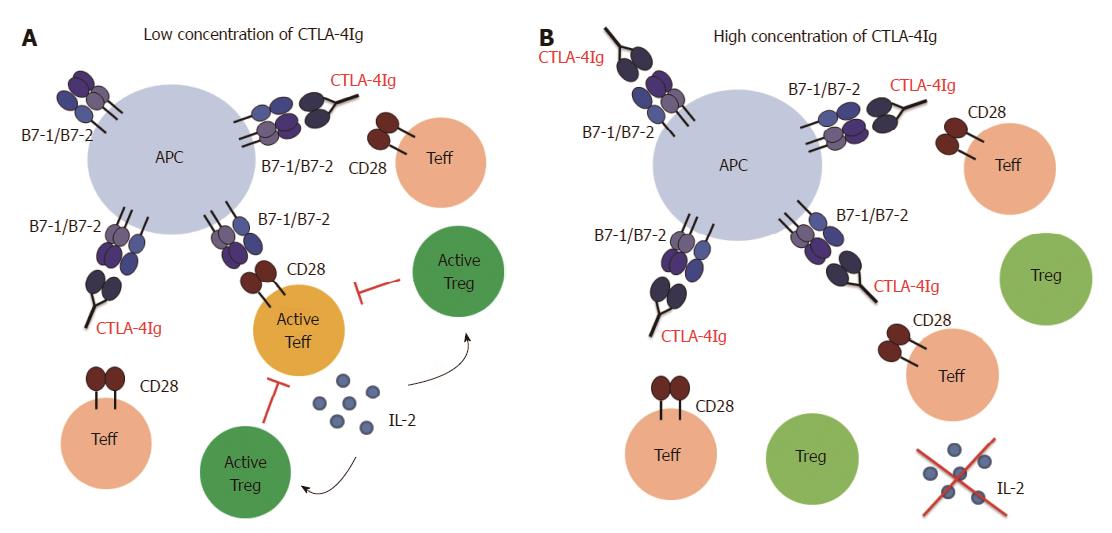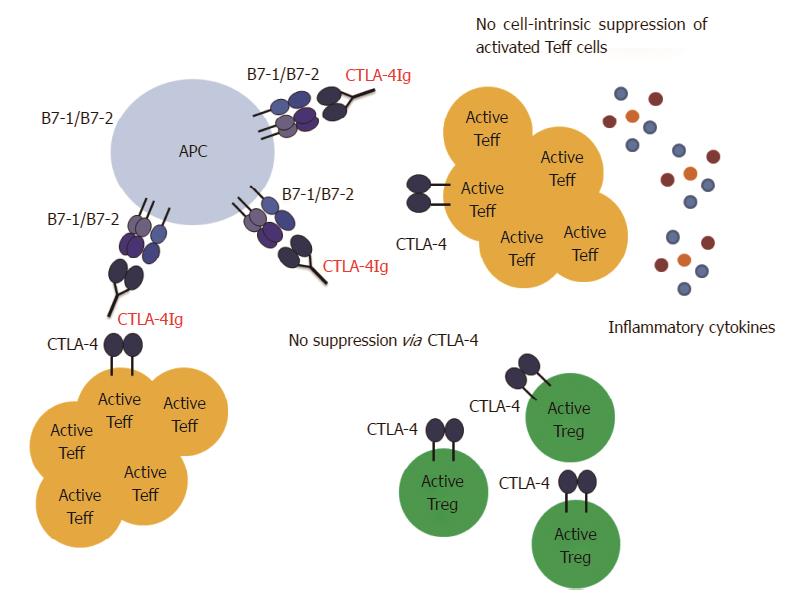Copyright
©2014 Baishideng Publishing Group Inc.
Figure 1 Costimulatory requirements of Foxp3+ Treg cells.
Treg cells, similar to Teff cells, depend on T cell receptor (TCR)-mediated recognition of an antigen for activation (signal 1). The requirements of Treg cells regarding the second, costimulatory signal are less clear. The exact pathways and necessary signals are still a matter of debate. So far, it is well established that Treg cells depend on CD28 and CD40L for their thymic development. Also, glucocorticoid-induced tumour necrosis factor related receptor (GITR) is stabilizing Foxp3 expression during maturation in the thymus. In order to get properly activated and to proliferate, triggering of OX40 and GITR, in concert with IL-2, was reported to be crucial. The induction of iTreg cells in the periphery is promoted by PD-1 signalling. The function of Treg cells depends on cytotoxic T lymphocyte antigen (CTLA)-4 and ICOS. See text for more details and references.
Figure 2 The potential effects of a cytotoxic T lymphocyte-associated antigen-4Ig treatment started before T cell priming.
If cytotoxic T lymphocyte antigen (CTLA)-4Ig is given before T cell priming at a low dose, it reduces CD28 mediated T cell activation. Since blockade of B7 molecules is not complete, some Teff cells are still activated and produce interleukin (IL)-2. Treg cell-activation is less or not dependent on CD28 signalling and the low amounts of IL-2 produced by the Teff cells are sufficient to maintain Treg cell activation. In that way activated Treg cells further suppress the remaining Teff cells. The effect of CTLA-4Ig is in this situation based on down-regulation of Teff cells and maintenance of Treg activity (A). If CTLA-4Ig is given at a high concentration, Teff and Treg cells are equally suppressed due to missing costimulation and/or IL-2. The effect of CTLA-4Ig is in this case based on reduced Teff cell activity (B). APC: Antigen presenting cell, Teff: effector T cell, Treg: Regulatory T cell.
Figure 3 The potential effects of cytolytic T lymphocyte-associated antigen-4Ig treatment given after T cell priming.
If cytolytic T lymphocyte antigen (CTLA)-4Ig is applied after priming when T cells are already activated, it mainly interferes with the CTLA-4/B7 interaction. This interaction is important for cell-intrinsic down-regulation of Teff cells. In the absence of this cell-intrinsic regulation, activated Teff cells proliferate more strongly and secrete more inflammatory cytokines. Furthermore, Treg cells are not able to exert their suppressive function mediated via CTLA-4. Both effects will potentially result in further increase of the T cell mediated inflammation. APC: Antigen presenting cell; Teff: Effector T cell; Treg: Regulatory T cell.
- Citation: Vogel IT, Gool SWV, Ceuppens JL. CD28/CTLA-4/B7 and CD40/CD40L costimulation and activation of regulatory T cells. World J Immunol 2014; 4(2): 63-77
- URL: https://www.wjgnet.com/2219-2824/full/v4/i2/63.htm
- DOI: https://dx.doi.org/10.5411/wji.v4.i2.63











